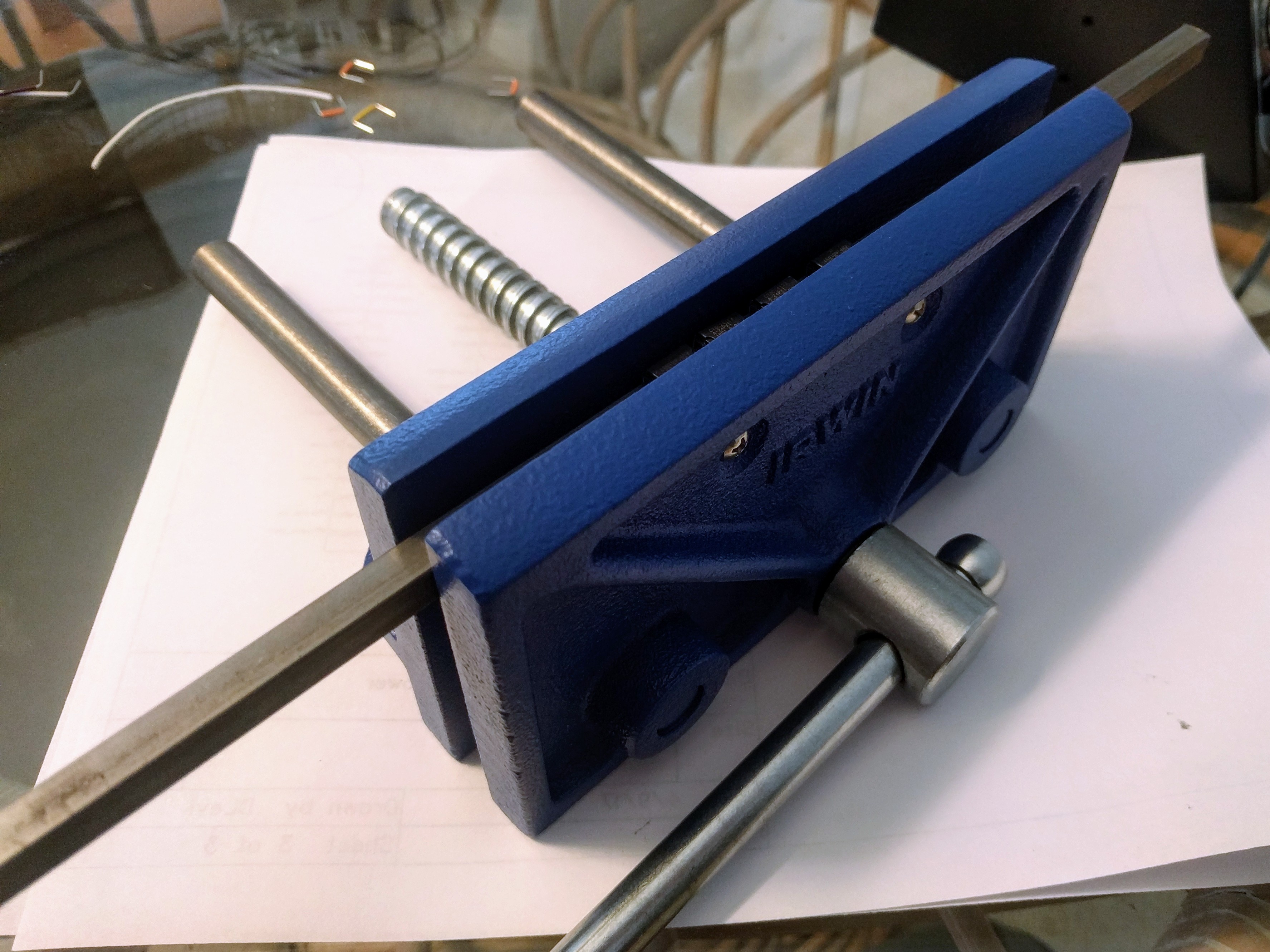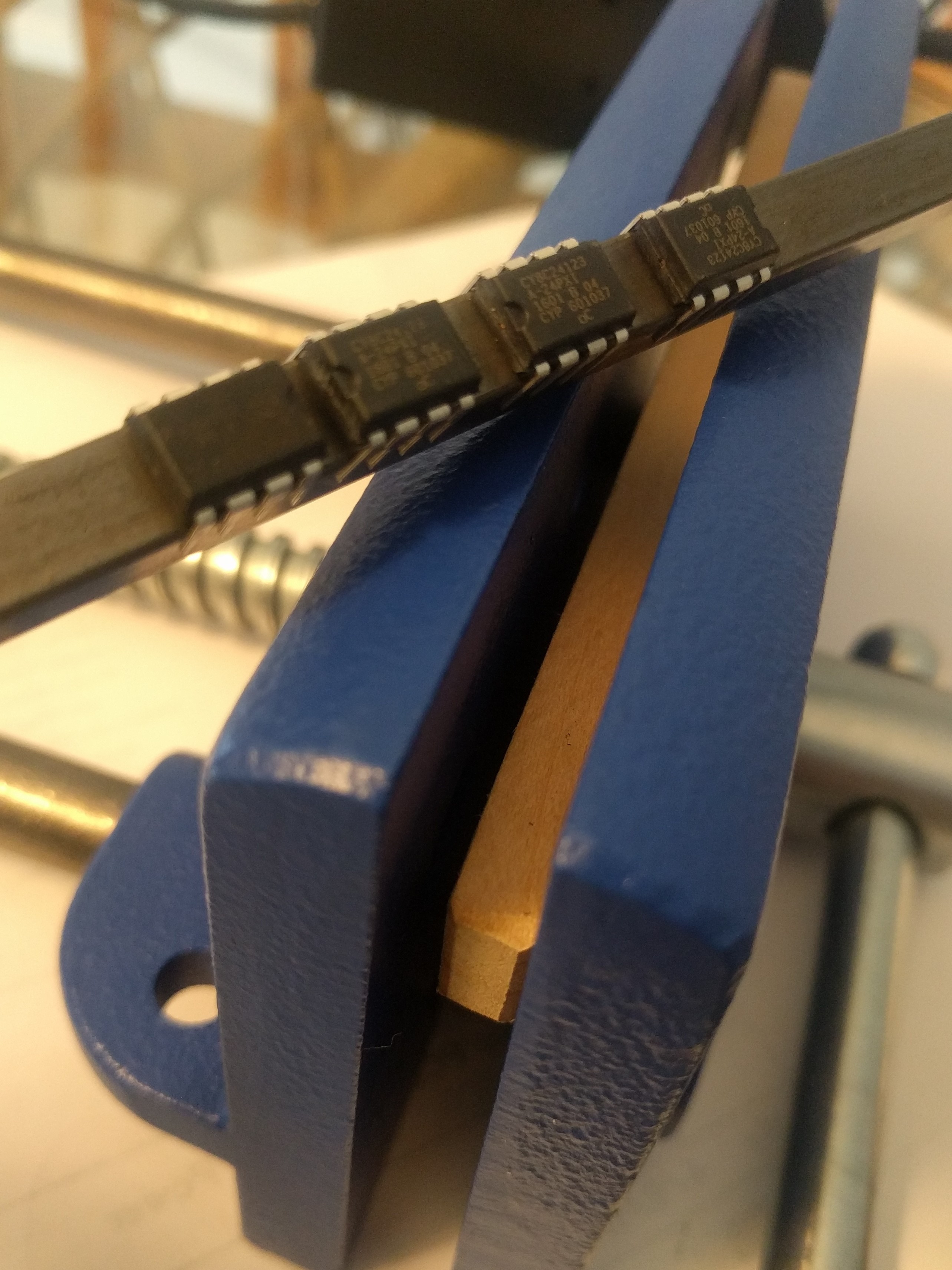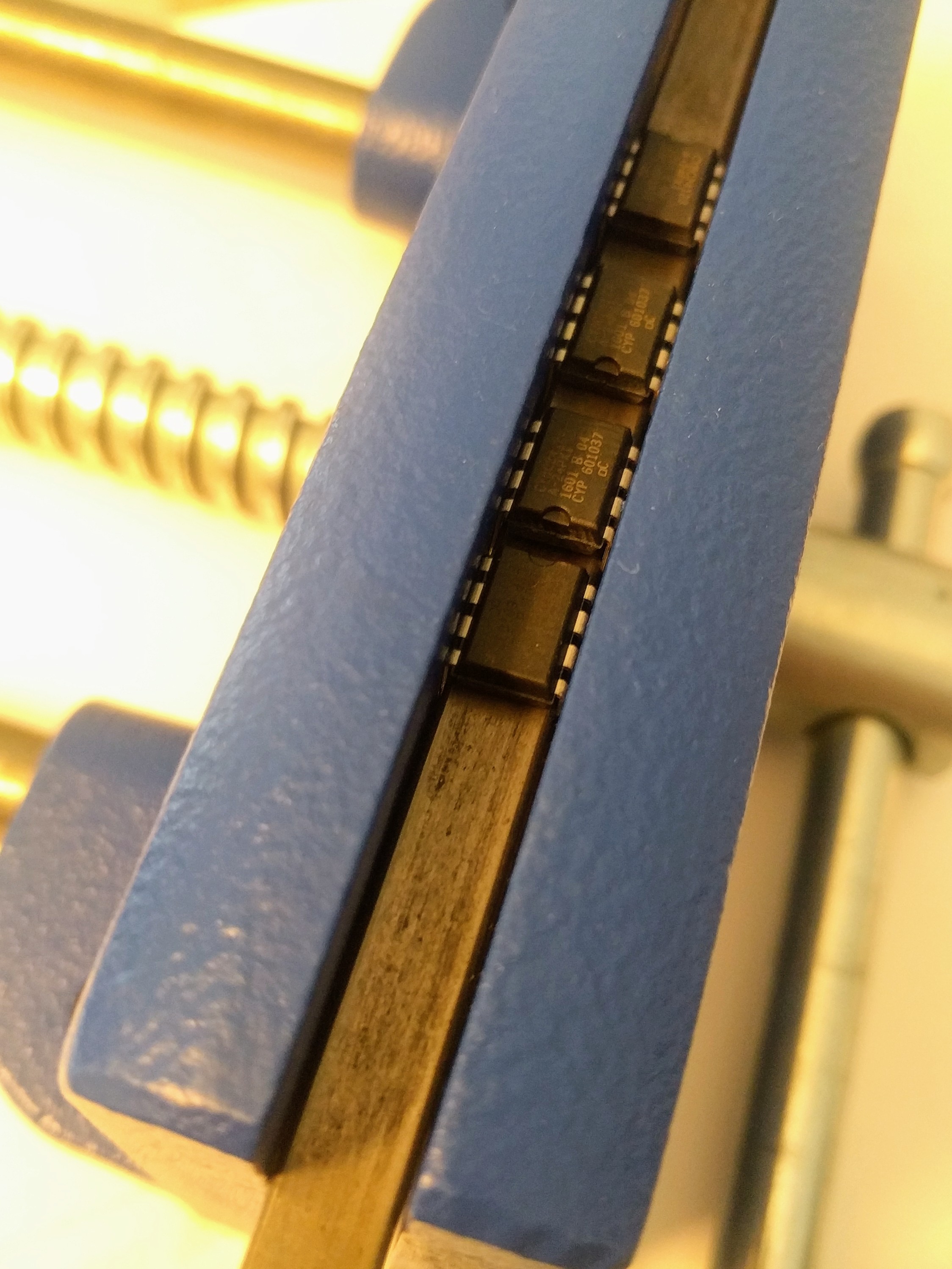I noticed a problem while testing out my first few kits. DIP package chips, like I'm using in these kits, have pins that are bent out a bit too far for breadboards. The pins are about 0.35" apart, but the breadboard works in increments of 0.1". The pins need to be bent down to 0.3". I assume these pins spread to lock in place when pushed into a printed circuit board.
But on a breadboard, this causes problems. A few of my testers didn't know how to rock the part into place, and didn't want to force the part in. That's understandable, and I remember having the same issue when I was just getting started in electronics.
So, I built a rig that makes it easy for me to bend dozens of chips at the same time:



As you can see, the whole idea is to carefully squish the pins against the hardened steel of the key stock. The key is a bit smaller than 0.3", but when you add in the thickness of the chip pins, it all fits.
I attached a strip of wood to one side of the clamp. Since the wood is only 0.25" thick, it won't interfere with the clamping. But it will hold the key stock and the chip in place. It only takes a half rotation of the clamp to press the pins into place.
The key stock is conductive, so I'm not too worried about ESD buildup when using this rig. I might ground the key stock though, just in case.
I'll be able to to press about 15 microprocessors at a time. I've tested a few parts, and they all fit right into breadboards beautifully. No more pushing and rocking by hand just to get parts in. I hope you enjoyed reading about this simple little solution to an unusual engineering problem.
 David Levi
David Levi
Discussions
Become a Hackaday.io Member
Create an account to leave a comment. Already have an account? Log In.